When I first decided to take advantage of the Australian Work and Holiday Visa (WHV), I didn’t have a solid plan. I was 26 years old and terrified.
Go to another country and find a job, new friends, and a roof over my head? The idea seemed impossible.
Prior to Australia, I’d never traveled outside of the United States alone. And — for that matter — I had very little experience with solo travel within the United States. I wanted to be more like the travel bloggers that I followed online, but there was one thing stopping me from taking the plunge: Fear.
The more excuses that I came up with not to travel, the more I believed them. While the Australian WHV seemed like a great opportunity for me, I wasn’t sure if I had enough confidence to go through with it.
Since the Australian WHV has an age limit (18-30), I was forced to take action sooner rather than later. Although I had a fear of going to the other side of the world alone, I was more afraid of regret. I didn’t want to get into my 30s, look back, and think, “I should have done that.”
[Tweet “”I didn’t want to get into my 30s, look back, and think, ‘I should have done that.\’””]
Despite being terrified, I applied for the visa, purchased a plane ticket and packed a suitcase.
The day before my flight, I felt sick to my stomach. But I knew I had to get on that airplane, or else I’d always wonder.
And I’m so happy that I did.
I proved my doubts wrong and created so many memories along the way.

There is no secret to how I did my year in OZ. I didn’t have a magic wand or a lot of money. If you want to do what I did, you just need enough money. And — more importantly — you need the desire.
What Is the WHV and Who Is Eligible?
There are two names for the WHV. Both of the visas are open to anyone between the ages of 18 and 30 who holds a passport for a country that participates in Australia’s Working Holiday program.
The Working Holiday visa (subclass 417) applies to residents of Belgium, Canada, Republic of Cyprus, Denmark, Estonia, Finland, France, Germany, Hong Kong, Republic of Ireland, Italy, Japan, Republic of Korea, Malta, Netherlands, Norway, Sweden, Taiwan, and the United Kingdom. Residents of these countries are eligible to apply for a second year in Australia if they work 88 days in regional Australia (usually doing some type of farm work).
The Work and Holiday visa (subclass 462) applies to residents of Argentina, Bangladesh, Chile, China, Indonesia, Israel, Malaysia, Poland, Portugal, Slovak Republic, Slovenia, Spain, Thailand, Turkey, Uruguay, and the US. The Work and Holiday visa cannot be applied for a second year. Only USA passport holders can apply online for this visa.
After I applied for the visa with my US passport, it was approved within three weeks. I had heard that the visa can take anywhere between three days to a few weeks to be approved, and believe it took a little longer for me because I applied around the holidays.
You have one year to enter Australia from the date your visa is granted. If you’re 30 years old, you can apply as long as you’re granted the visa before you turn 31.
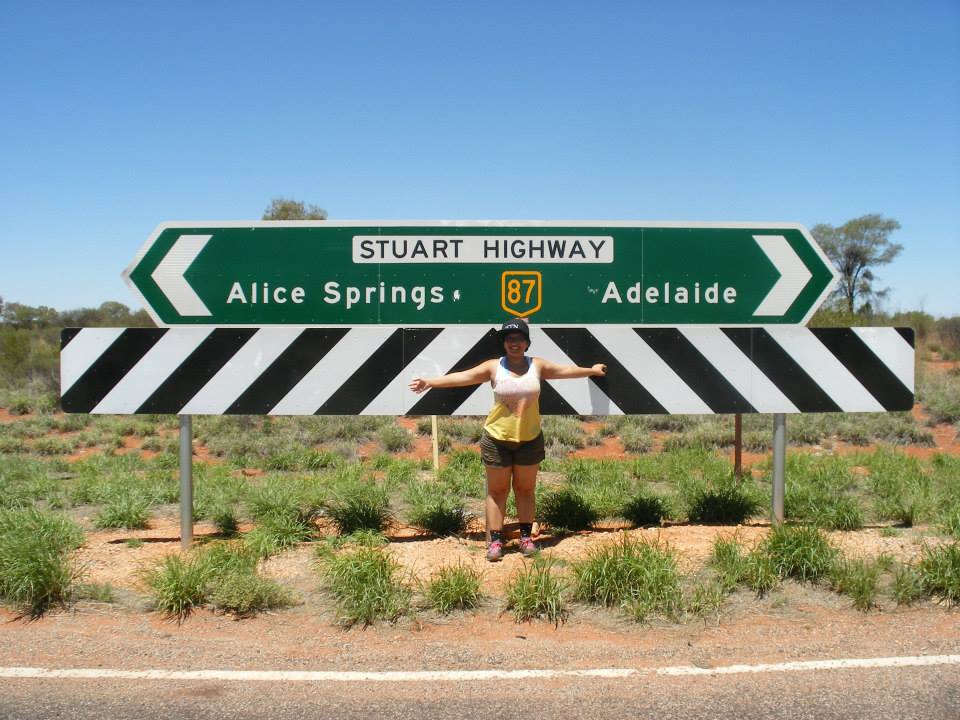
The WHV allows you to stay in Australia for up to one year from the date you enter the country. You are free to go in and out of the country as much as you want within those 12 months. However, you will not gain back the time missed. You can work the entire 12 months or not at all, but you cannot work for the same employer for more than six months.
The six-month rule can be intimidating, but most employers in Australia are well aware of the limitations that come with the WHV. I worked three jobs at various stages during my year in Australia: I worked for a fundraising company for two days (Yes, two days!), in a hostel for four weeks (this started out as work for accommodation and turned into a paid full-time cleaner position, which included accommodation), and then in a hospital as an Acting Administration Officer for five months (this position was acquired with the help of a recruitment agency).
What You’ll Need to Apply for the Visa
Before you apply for the WHV, you’ll need a few important documents.
You might need to show proof that you graduated from high school or completed an equivalent. A few days after I applied for the visa, I was asked to provide evidence of my highest completed education and I had to track down my college transcripts. To avoid this hassle, have this information ready when you apply.
Along with your education, you should also have documentation of the following:
Bank Statements
The Australian government requires that you have $5,000 AUD in your bank account before entering the country. You also need a return ticket home or enough money to buy a ticket home.
I opened up an Australian bank account from the states (I used NAB) and transferred the money from my US-based bank account. Other popular Australian banks are Commonwealth, Westpac, and ANZ.
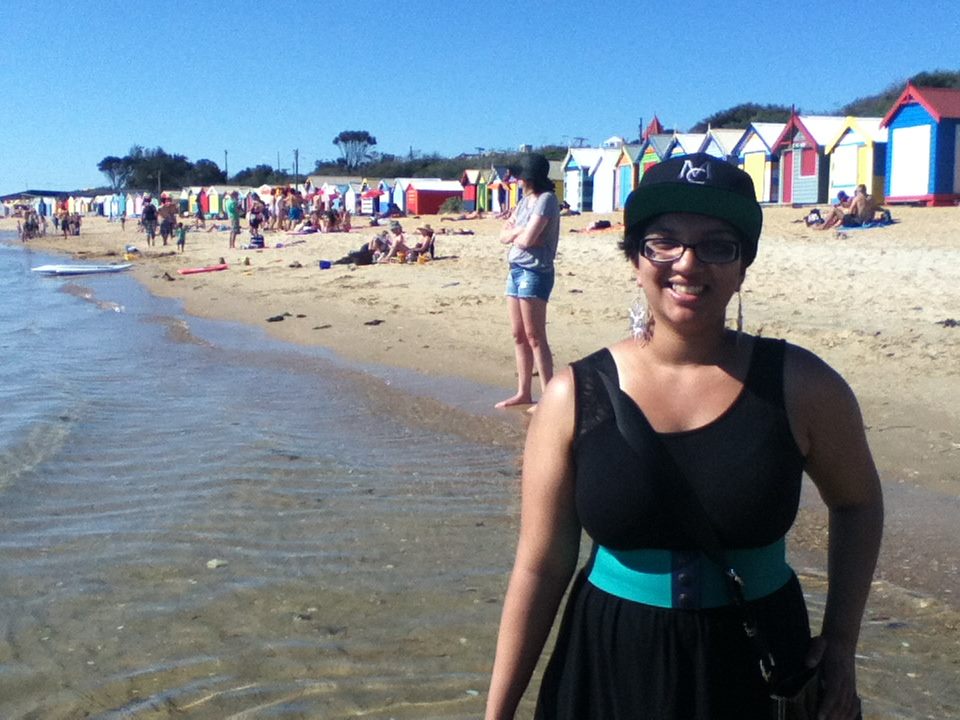
You can provide a bank statement of your current bank account if you haven’t opened your Aussie one yet.
Note: The visa fee isn’t cheap. The visa currently costs $440 AUD. Have your debit or credit card ready while applying.
Travel/Health Insurance
The Australian government also requires that you have travel insurance before entering the country. Check to see if your health insurance from home covers you.
Passport
Finally, make sure you have your passport ready! You’ll need it.
Tip: It’s a good idea to gather all of your documents (including your visa grant letter, which will be emailed to you when your visa is accepted) in a folder and place it in your carry-on the day you leave. Australian border patrol didn’t ask me for anything when I entered the country, but you never know if they’ll ask.
What to Do After You’re Granted Your Visa
Set a Departure Date and Book Your Flight!
After you’re granted your visa, you need to decide when you want to leave. I purchased a one-way plane ticket from Chicago to Sydney because I wasn’t sure when I was going to come back. I enjoyed the freedom of not knowing.
Pack
I did not want to carry around a backpacking pack on my trip. I decided to go with wheeled luggage instead.
When it comes to packing, have items that you can mix, match, and layer with to create the perfect travel wardrobe. After a while, you’ll find yourself wearing the same items over and over again. Dresses can also be easy and light to pack.
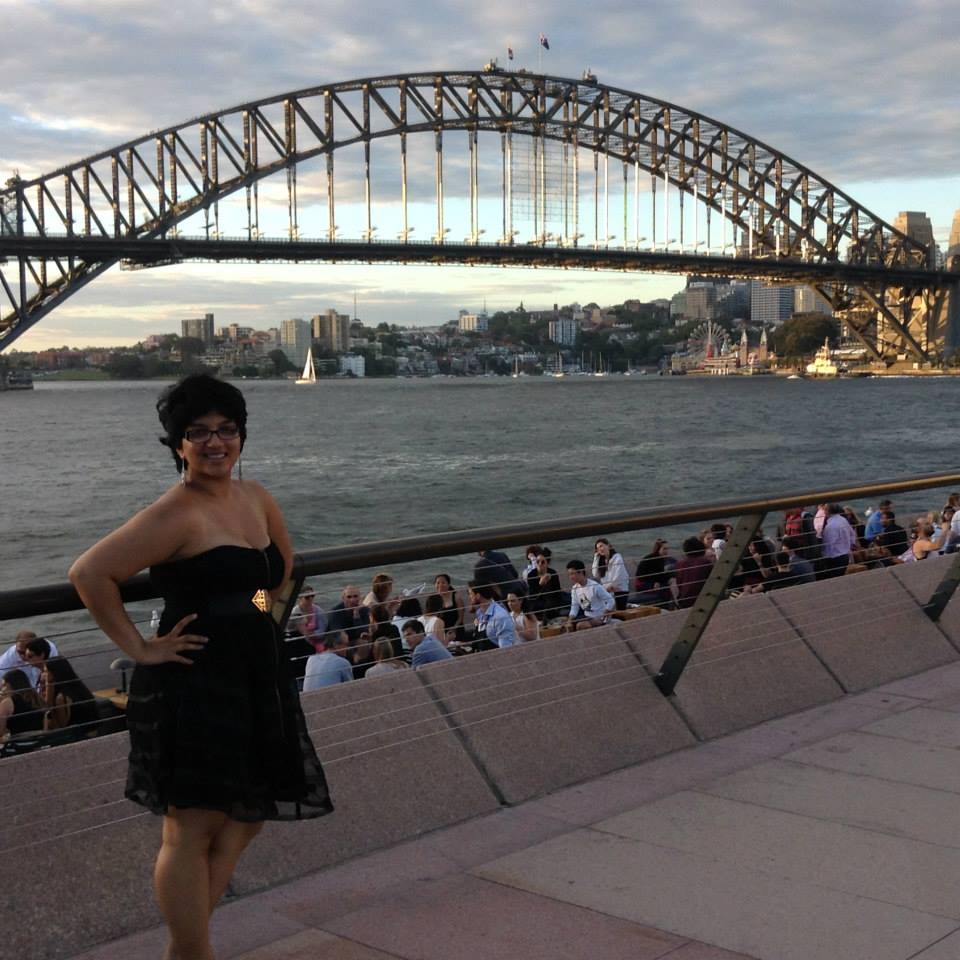
Pack a few cold-weather items, too! Australia is not warm all year round. I lived in Melbourne for six months and arrived during the start of winter. I was silly to think that I didn’t need a jacket and ended up buying one after I arrived.
Tip: You can always buy items in Australia. If you’re on a tight budget, check out secondhand shops (or “op shops,” as they call them in OZ).
What to Do Once You Arrive in Australia
Look for a Place to Stay
My starting point was Sydney, and I booked two weeks at a hostel for when I first arrived.
I immediately applied for my tax file number online and it arrived at the hostel within one week. You’ll need your tax file number in order to get paid.
After Sydney, I lived in Brisbane for two months and stayed in hostels the entire time I was there. When I finally arrived in Melbourne, I was more confident that I wanted to stay there longer, and found a flat with a shared room to live in. At the time, my goal was to save money so I could travel. A shared room seemed like a good way to save. I was lucky enough that most of my roommates were kind and considerate. (I did have a couple of roommates who weren’t as considerate, and I learned how much I value my space and privacy.)
Shared rooms are common in Australia. If you want a private room, it’ll cost you a little more. You can usually find someone renting a room or shared room on gumtree.com.au or in Facebook groups. They’ll normally want you to make a three-month commitment, but that’s not always the case.

I lived in two different flats while in Melbourne. I found the first one through word of mouth. I found the second one on GumTree.
Find A Job
In order to find employment in Australia, you’ll first need to revise your resume (or CV, as they call it in OZ).
Make your CV much more detailed. It was a challenge turning my one-page resume into a three-page CV. Try to tailor your CV to a specific industry (i.e. hospitality, office, retail, etc.). Include a strong summary statement at the beginning of your CV. I had about four different CVs for different industries.
Many people go into the hospitality industry and end up working in cafes, hotels, bars, and restaurants.
If your job involves serving alcohol, you’ll need to get a special certificate by taking an RSA (Responsible Service of Alcohol) course. Keep in mind that there’s usually a fee for the RSA, and if you’re registered in one state, it may not be valid in other states of Australia. If you don’t want to spend the money for an RSA before getting a job, many places will hire you if you get certified before your start date.
As I mentioned earlier, I did have a couple of less than stellar job experiences before finding a decent well-paying job during my time in Australia. I was grateful for my previous office experience, which helped me land a decent office job in the hospital for five months.
The job is part of the experience. Try to find something that you’ll like.
You should also note that Australia has a high pay rate, and if you save carefully, it can fund trips around OZ.
Tip: Signing up with recruitment agencies and handing out CVs in person really helped me. I also used websites such as seek.com.au to look for work.
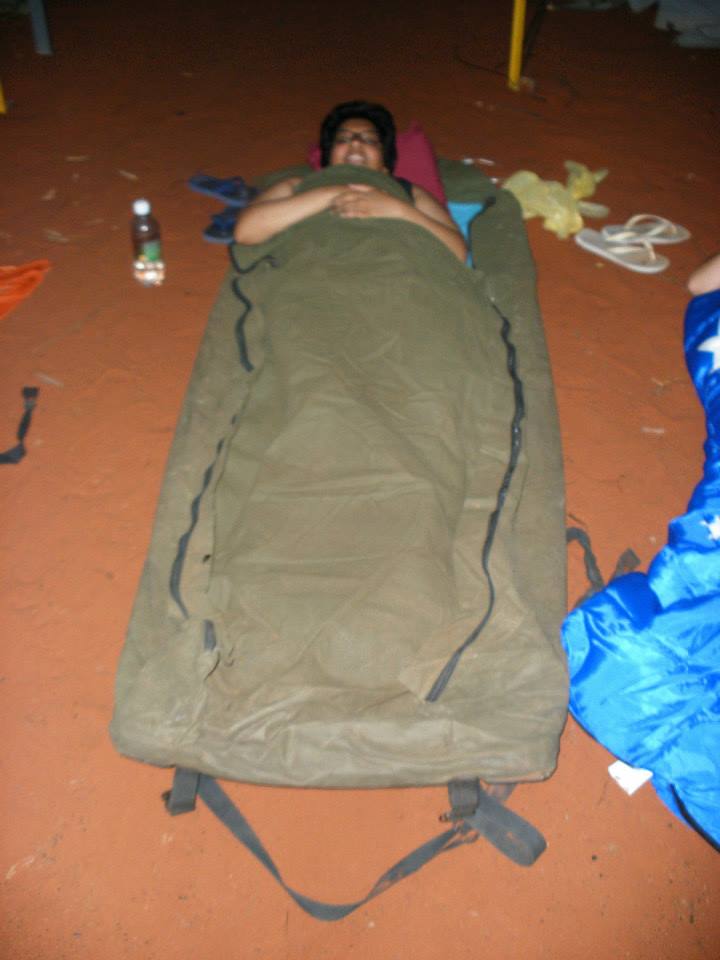
Travel
The point of the WHV is to travel! (Though of course, some people opt to work the whole time and not see any of the country.)
Australia is a big country. I spent one year there and definitely didn’t see everything. After spending some time in Brisbane, I decided that I didn’t want to travel further north (where it’s warmer). Instead, I explored Melbourne for six months, spent some time in Sydney, Tasmania, South Australia and took an organized trip through the Outback. My dad also came to visit me for one month and we explored Australia, New Zealand, and Fiji together.
There is no right way to travel. It really depends on what you want. Who knows, maybe you’ll meet some people and decide to go on a spur-of-the-moment road trip together.
Tip: Flights within Australia are reasonable and you can usually find a good deal. Tigerair and Jetstar are good budget airlines.
How to Prepare for Returning Home from Australia
Before you leave OZ, make sure you file for your tax refund! I’d also recommend getting rid of worn-out clothing and beat-up shoes. And last but not least, celebrate!
Before I left OZ, I celebrated by treating myself to a night out in Melbourne. Some new friends and I went to a rooftop bar where I had the most delicious espresso martini of my life. (Okay, I had two.) It was my last night and I was proud of myself for surviving one year in OZ!
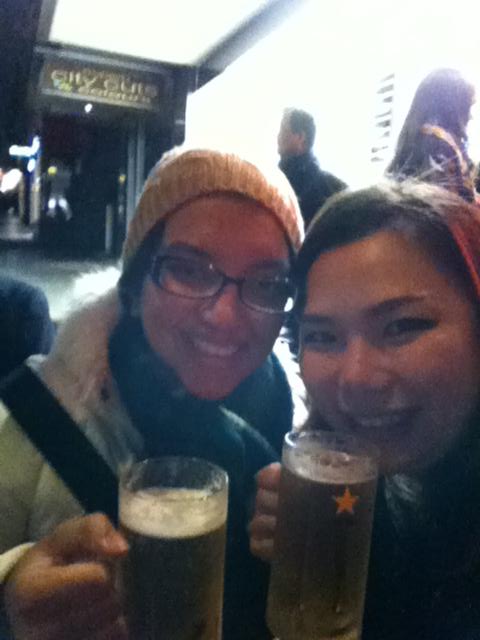
Final Tips
An unlocked phone will come in handy. All you have to do is pop in a new sim card and you’ll have an Australian phone number. You can also buy a cheap cell phone in OZ. You’ll need a phone number to put on your CV and cover letters and use to contact your new friends. There are many mobile providers to choose from that offer no lock-in contract plans. I went with Optus and paid month-by-month as I needed it.
Don’t be afraid to talk to people. In my experience, Australians are generally friendly and will be happy to help you out. Just introducing yourself to some people in your hostel can spark up a friendship. It gave me comfort knowing that there were others who were also on the WHV.
Remember to give your body time to adjust to the time difference. You don’t have to immediately go to the Sydney Opera House once you land in OZ. Sleep off the jet lag and treat yourself to a good meal. You’re human and you need rest. Consider checking into a private room in a hostel or a hotel for the first couple of nights.
When you feel like giving up, don’t. When my job at the hostel didn’t work out the way I wanted it to, I spent the entire night crying. I felt like giving up. But I had to remind myself that I didn’t come to Australia to be miserable. After I quit the hostel job, I had about a week left in Brisbane before moving on to Melbourne. I spent that time updating my CV and sending it to recruitment agencies in Melbourne. I also enjoyed the rest of my time in Brisbane by treating myself to a few good meals, going on long walks around the city, and taking a day-trip to the Australia Zoo.
When I look back on my time in Australia, I think of all of the experiences I’ve had (good and bad!).
From wine tasting in Yarra Valley in Victoria to hiking Cradle Mountain in Tasmania, the Australian WHV was an adventure of a lifetime. And I almost didn’t do it because I was afraid and it didn’t seem practical enough.
If you fit the requirements for the WHV, I urge to you to take advantage of this incredible opportunity.
